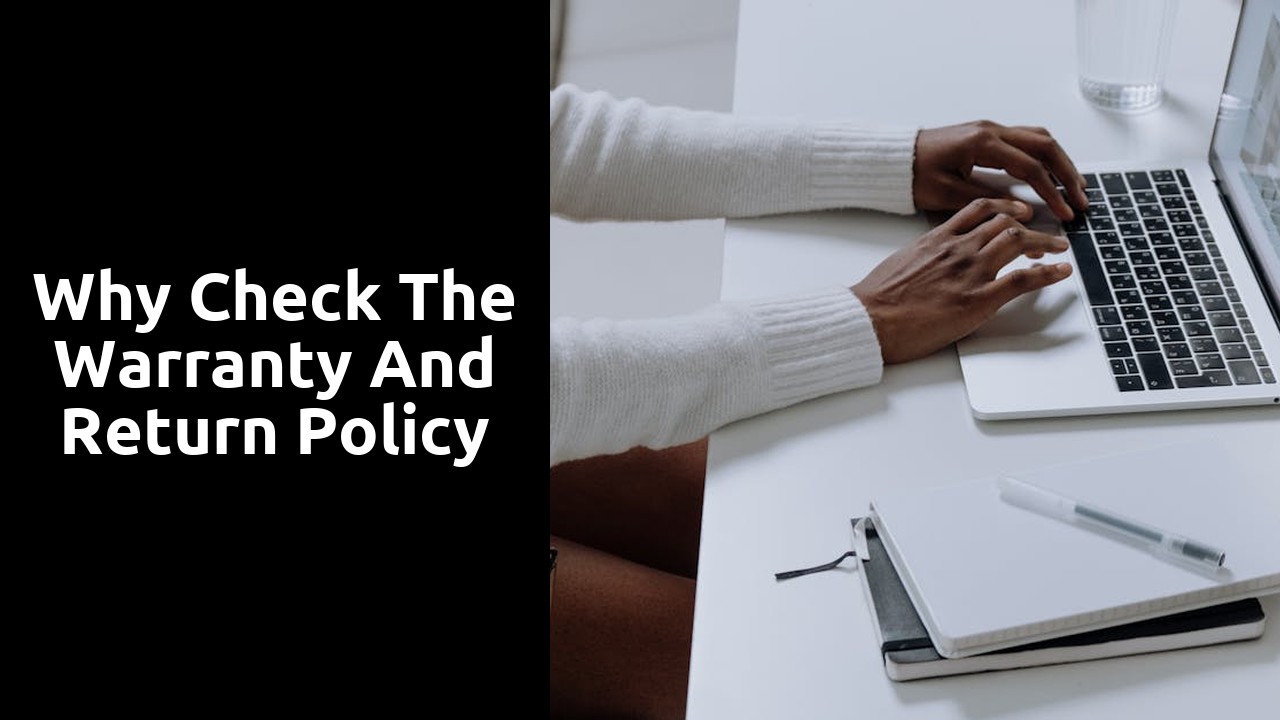
Why Check the Warranty and Return Policy
Return Policy Exceptions
When shopping online or in stores, it is essential to be aware of the return policy exceptions that may apply to your purchase. Return policies typically outline specific conditions under which items may not be eligible for return or exchange. These exceptions are put in place by retailers to protect their business interests and ensure fair practices for all customers.
Return policy exceptions can vary between retailers and may include items such as clearance or discounted products, perishable goods, personal hygiene items, and custom-made or personalised items. It is crucial to familiarise yourself with the specific return policy of the retailer you are purchasing from to avoid any unexpected issues or disappointments later on. By understanding the exceptions, you can make more informed decisions when making a purchase and be better prepared in case you need to return an item.
Items Not Eligible for Return
There are certain products that may not be eligible for return, so it's important to be aware of these exceptions before making a purchase. Items such as opened software, downloadable digital content, perishable goods, custom-made or personalized items, and gift cards are typically non-returnable. These restrictions are in place to ensure that the seller can maintain quality standards and protect their business from potential misuse or fraud.
Additionally, some items like underwear, swimwear, and earrings are often non-returnable due to hygiene reasons. It's crucial to carefully read the return policy of the retailer before buying these items to avoid any disappointment or inconvenience later on. By being informed about what products are not eligible for return, you can make more confident and informed purchasing decisions.
Warranty Extension Options
Extending the warranty on your purchases can offer added peace of mind, ensuring that you are covered for any unexpected faults or malfunctions that may arise. Many retailers and manufacturers provide the option to purchase extended warranties, which prolong the duration of your coverage beyond the standard period. By investing in a warranty extension, you can safeguard your investment and avoid the potentially high costs of repairs or replacements in the future.
When considering warranty extension options, it is essential to carefully review the terms and conditions of the extended coverage. Be sure to understand what is included in the extended warranty, such as whether it covers parts, labour, or both, and any limitations or exclusions that may apply. Additionally, compare the cost of the extended warranty to the potential expenses of repairing or replacing the item without coverage. Making an informed decision about extending your warranty can save you money and provide added protection for your valuable purchases.
Prolonging Coverage Period
To extend the coverage period of your warranty, consider exploring options to purchase additional protection for your product. Many manufacturers offer warranty extension plans that can prolong the duration of coverage beyond the standard period. These extensions often provide added peace of mind and protection against unexpected repair costs that may arise after the original warranty expires.
When considering warranty extension options, be sure to carefully review the terms and conditions of the plan. Pay attention to any exclusions or limitations that may apply, as well as the cost of the extension compared to the potential benefits offered. By weighing these factors, you can make an informed decision on whether investing in a warranty extension is a sensible choice for your particular product.
Return Policy for Defective Items
When dealing with defective items, it is crucial to be aware of the company's return policy. Ensuring that you understand the procedures for faulty products can save you time and hassle in the long run. It is recommended to carefully read through the terms and conditions regarding returns and defects before making a purchase.
In the event that you receive a defective item, promptly reach out to the company to initiate the return process. Familiarise yourself with the specific steps required to return a faulty product, which may include providing proof of purchase and detailing the issue. By adhering to the outlined return policy for defective items, you can efficiently resolve the situation and obtain a replacement or refund.
Procedures for Faulty Products
When dealing with faulty products under a return policy, it is essential to follow the outlined procedures to ensure a smooth resolution process. Firstly, contact the customer service department of the store or manufacturer from where you purchased the item. Provide specific details about the issue you are experiencing and be prepared to provide proof of purchase, such as a receipt or order confirmation.
After contacting customer service, you may be instructed to return the faulty product either by post or in person to a designated location. Make sure to pack the item securely to prevent any damage during transit. It is advisable to follow any instructions provided by the customer service representative to expedite the processing of your return. Upon receiving the faulty product, the store or manufacturer will assess the issue and determine whether a replacement, repair, or refund is appropriate in line with the terms of the return policy.
Related Links
Historical Overview of Refurbished LaptopsWhy You Should Research and Compare Different Sellers
Roundup of the Best Refurbished Laptops
5 Best Sellers of Refurbished Laptops
Review of Refurbished Laptops
What to Inspect in a Refurbished Laptop